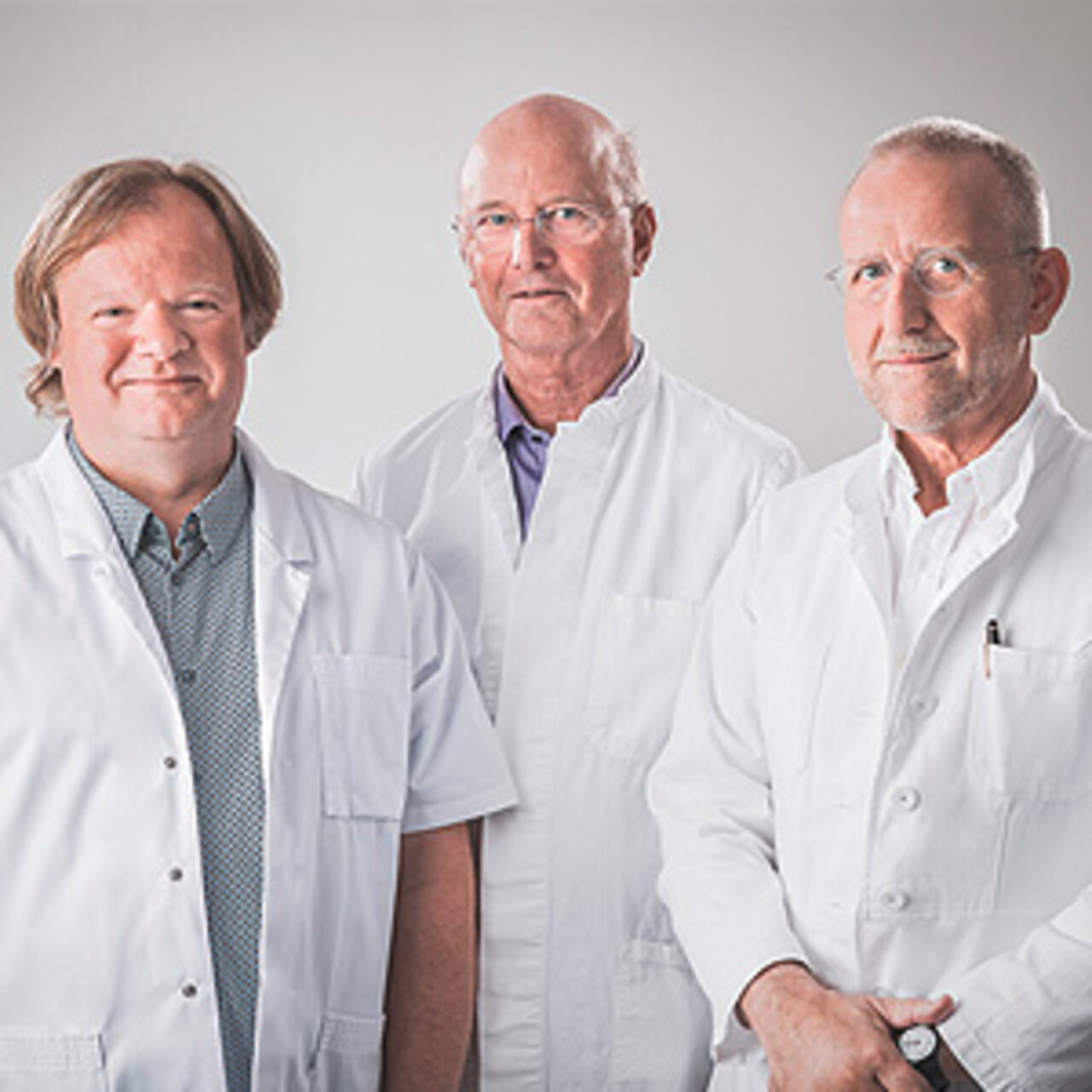Specialists in ENT Tumors
8 Specialists found
Information About the Field of ENT Tumors
What Are ENT Tumors?
The term ENT tumor includes various types of cancer. Generally, ENT medicine consists of the ears, upper airways, oral cavity, pharynx, larynx, lower airways, and esophagus. Cancer cells can arise from the cells of these different tissues.
What Are the Tumors in the ENT-Area?
Tumors of the Nose and Paranasal Sinuses
Malignant tumors of the nose and paranasal sinuses account for approximately 1% of all malignant tumors. In most cases, the maxillary sinus is also affected. Sinus carcinoma is an accepted occupational disease in carpenters because wood dust can cause this tumor. Fumes from nickel and chromium processing can also cause carcinomas inside the nose.
Throat Tumors
Tumors in the throat are most commonly squamous cell carcinomas. These arise from the surface tissue. The second most common type of tumor in the throat is adenocarcinoma, which arises from glandular tissue. In rare cases, tumors can also occur from soft tissue. Tumors may originate in the oral cavity from the lips, tongue, floor of the mouth, palate, or salivary glands. Carcinomas of the pharynx and larynx may occur deeper down. The thyroid gland can also be the source of malignant tumors.
Ear Tumors
Malignant tumors in the ear are rare. They most likely occur in older people. Basal cell and squamous cell carcinomas can develop in the auricle. This type of cancer can develop anywhere on the skin but is more common in places exposed to increased amounts of sunlight. So-called ceruminomas can develop from the cells that produce earwax (cerumen). This cancer does not spread to other parts of the body but destroys the ear canal as it grows.
How Do You Notice an ENT Tumor?
An ENT tumor is noticeable in very different ways, as the origin of the tumors varies greatly, as does the localization. Common symptoms of cancer include fever, fatigue, exhaustion, or swollen lymph nodes in the throat. For example, a tumor in the mouth may be noticeable by painful bleeding swelling in the mouth and lead to difficulty swallowing. A tumor in the pharynx area may cause a lumpy feeling in the throat, as well as hoarseness and difficulty breathing, among other symptoms. If the tumor is located in the nose, there may be obstructed breathing on one side, a change in voice, nosebleeds, or even increased mucus production.
How Are ENT Tumors Treated?
The general goal of any cancer therapy is to remove or destroy all tumor cells from the body. There are three pillars of treatment available for this purpose: surgery, chemotherapy, and radiation. Usually, these pillars are combined. In addition, newer therapy methods based on the molecular biological properties of the cancer cells can be used.
Surgery is useful when the disease is early and the cancer cells have not migrated to surrounding tissue or lymph nodes. This means that the tumor can be removed entirely with surgical excision, including a safety margin. However, if the tumor has already spread further, systemic therapy must be carried out to kill the other cancer cells in the body.
Radiation therapy involves directing high-energy beams specifically at the tumor cells and damaging them with the rays. This results in a slowed division or even death of the cancer cells. If the tumor is small, radiosurgery can be used, in which a small, clearly defined tumor is irradiated with high precision. The advantage of radiosurgery over surgery is that radiation can treat tissues that are difficult to reach. For example, benign acoustic neuroma, located between the cochlea and the brain, can be treated this way. In certain cases, irradiation by positively charged particles, protons, may be superior to irradiation by electromagnetic waves. Proton therapy can be used successfully, especially for tumors located near sensitive structures that must be spared.
Chemotherapy is administered to the body as a tablet or infusion. The drug is distributed throughout the body via the bloodstream and reaches all cancer sites. Chemotherapy is often combined with radiation, as the therapeutic effects of these two treatment pillars reinforce each other.
Chances of Cure and Prognosis
Although significant advances in medicine over the last few years, not every cancer patient can be permanently cured. The chances of cure depend individually on the type of tumor and how far it has spread. Furthermore, the general state of health of the patient plays a role and to what extent the patient can undergo aggressive therapy. After surgeries in the ENT area, functional and cosmetic limitations may occur. Therefore, close cooperation with the plastic surgery department is necessary to achieve a good result.
Which Doctors and Clinics Are Specialized in the Diagnosis and Treatment of ENT Tumors?
First and foremost, the specialist is the ear, nose, and throat (ENT) specialist for ENT tumors. Once diagnosed, an interdisciplinary approach is taken with physicians in radiation therapy, oral and maxillofacial surgery, plastic surgery, pathology, and radiology to discuss the individualized approach for each patient.
We will help you find an expert for your condition. All doctors and clinics listed have been reviewed by us for their outstanding specialization in ENT tumors and are awaiting your inquiry or request for treatment.
Sources:
- Strutz et al.: Praxis der HNO-Heilkunde, Kopf- und Halschirurgie. 2. Auflage Thieme 2009, ISBN: 978-3-131-16972-3.
- M. Dellian, F. Zimmermann, S. Ihrler, B.Wollenberg: Malignome des Nasopharynx.Abgerufen am: 02.12.2020.
- Kaanders J.H.A.M. et al.: Hypopharynxkarzinom. Springer Medizin Verlag 2006, ISBN: 978-3-540-31303-8., 5870-5873.
- Reiß: Facharztwissen HNO-Heilkunde: Differenzierte Diagnostik und Therapie. 1. Auflage Springer 2009, ISBN: 978-3-540-89440-7.
- Boenninghaus, Lenarz: Hals-Nasen-Ohren-Heilkunde. 13. Auflage Springer 2007, ISBN: 978-3-540-48721-0.






